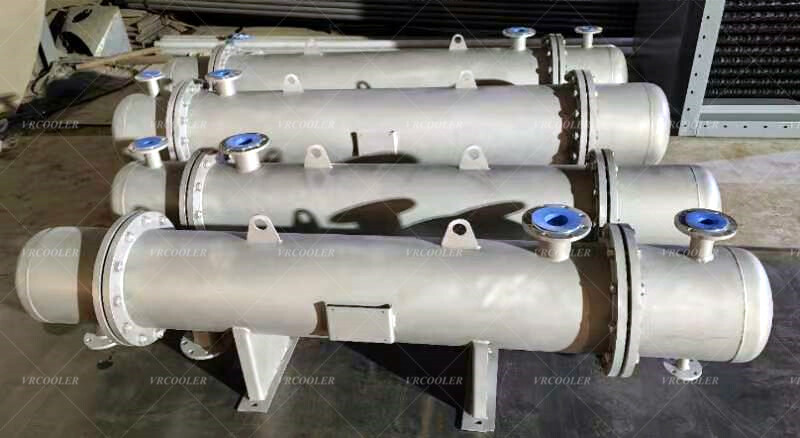A gas cooling heat exchanger in a food waste processing plant is a critical component used to manage the temperature of gases produced during the anaerobic digestion or composting processes. These gases often include biogas (a mixture of methane, carbon dioxide, and other trace gases) or hot exhaust gases from combustion processes. The heat exchanger helps cool these gases to a manageable temperature for further processing, storage, or utilization.
Role of Gas Cooling Heat Exchanger in Food Waste Plants
Cooling Biogas:
During anaerobic digestion, organic food waste breaks down, producing biogas.
Biogas is typically hot and saturated with moisture when it exits the digester.
A gas cooling heat exchanger reduces the temperature of the biogas, condensing out moisture and making it suitable for:
Storage in gas holders.
Use in combined heat and power (CHP) systems.
Upgrading to biomethane (removing CO₂ and impurities).
Cooling Exhaust Gases:
If the biogas is combusted in a CHP unit or flare, the exhaust gases need to be cooled before being released into the atmosphere or further treated to meet environmental regulations.
Heat Recovery:
The heat removed from the gas can be recovered and reused in the plant, such as for heating the digester or other processes, improving overall energy efficiency.
Shell and Tube Heat Exchangers Commonly used for biogas cooling.
Biogas flows through tubes while cooling water or another fluid flows around the tubes in the shell.

Key Design Considerations
Material Selection:
Biogas contains corrosive components like hydrogen sulfide (H₂S), so materials must be corrosion-resistant (e.g., stainless steel, specialized coatings).
Temperature Range:
Biogas exits the digester at around 35-55°C (95-131°F) and may need to be cooled to near ambient temperature.
Exhaust gases from combustion can be much hotter (up to 400-600°C or 752-1112°F).
Moisture Removal:
Cooling biogas causes water vapor to condense, so the heat exchanger must handle condensate removal.
Fouling and Maintenance:
Food waste biogas may contain particulates or impurities that can foul the heat exchanger.
Regular cleaning and maintenance are essential.
Energy Efficiency:
Recovering heat from the cooling process can improve the overall efficiency of the plant.
Applications in Food Waste Plants
Biogas Cooling for CHP Systems:
Cooling biogas before it enters a CHP unit ensures efficient combustion and power generation.
Biomethane Production:
Cooling is a critical step before biogas upgrading (removing CO₂ and impurities) to produce biomethane.
Exhaust Gas Treatment:
Cooling exhaust gases from flares or engines to meet emission standards.
Odor Control:
Cooling and condensing gases can help reduce odors associated with food waste processing.
Maintenance and Operational Tips
Regular Cleaning:
Inspect and clean heat exchanger surfaces to prevent fouling from particulates or biofilms.
Corrosion Monitoring:
Check for signs of corrosion, especially in areas exposed to H₂S.
Condensate Management:
Ensure proper drainage of condensate to prevent blockages.
Performance Monitoring:
Monitor temperature differentials and pressure drops to detect inefficiencies or blockages early.

